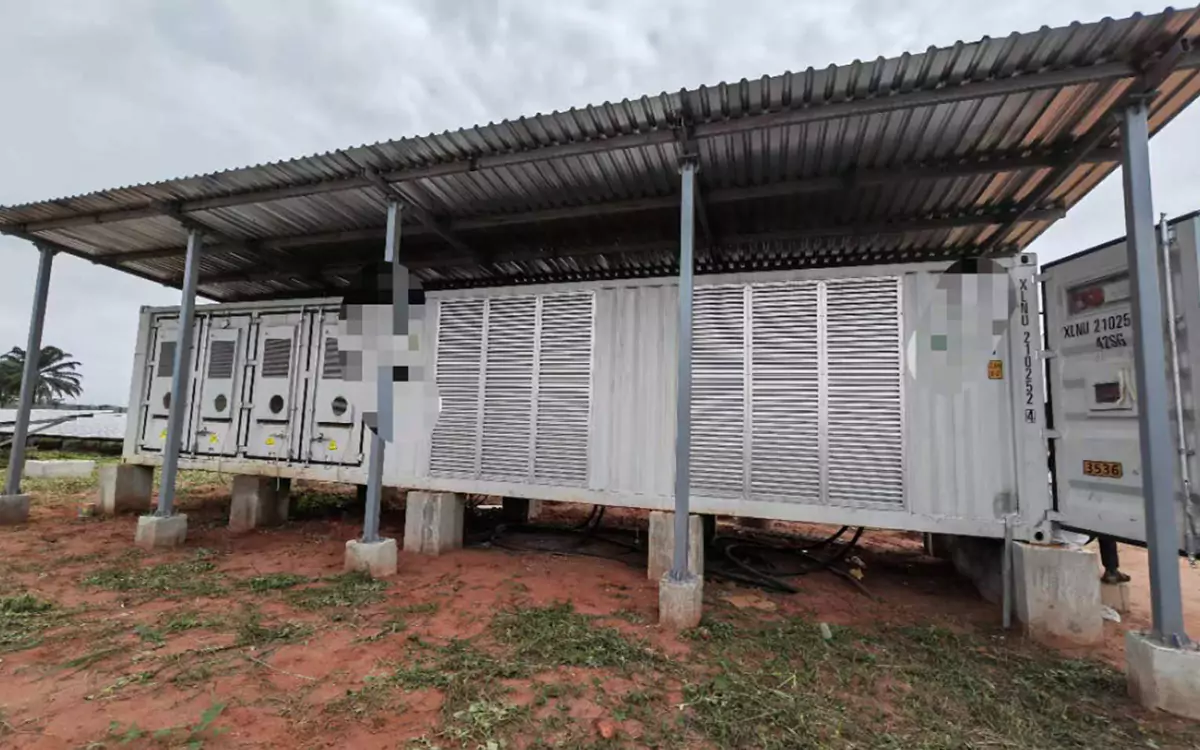Liquid Cooling vs. Air Cooling in BESS Containers

Why Your Cooling System Choice Matters
Battery Energy Storage Systems (BESS) have been marked as a progressive change in renewable energy integration. But there is a critical challenge that still needs to be worked out-cooling. A poorly designed cooling system can lead to the following:
- 15-30 % battery lifespan loss
- Increased fire risk due to thermal runaway
- Increased operational costs due to frequent maintenance
Whether it is a grid-scale BESS or a modular unit, the choice between liquid cooling and air cooling will determine the efficiency, safety, and ROI of the entire project. Here's a straight path to actionable insights for engineers, project managers, and procurement teams: no spamming of noise, straight guidance.
Part 1: How Cooling Systems Work in BESS Containers
A. Liquid Cooling: Precision Temperature Control
- Factor: The closed cycle transfers the coolant directly through channels connected to the cells of the battery. It carries the heat to an external radiator.
Key Advantages:
- Excellent Heat Transfer: Liquids absorb four times more heat than air. Cell temperature remains between ±3°C.
- Ultra Compact: Best suited for high-density lithium-ion batteries (liquid cooling for example, by the Tesla Megapack).
- Climate Independency: It can work in the extremes of -30° to 50°.
B. Air Cooling: Simplicity and Cost Efficiency
- Mechanism: The fans simply circulate ambient or conditioned air across the battery surfaces.
Key Advantages:
- Reduced Capital cost: No bottom-line cost for pumps, pipes, or coolant.
- Maintenance simplicity: Very little moving parts will reduce the need for servicing.
- Proven Reliability: Comes and has been active in numerous small BESS instances, like residential solar storage.
Part 2: Head-to-Head Comparison
| Factor | Liquid Cooling | Air Cooling |
| Upfront Cost | $120–$200/kWh | $50–$80/kWh |
| Energy Efficiency | 85–95% | 65–75% (varies with climate) |
| Lifespan Impact | Extends battery life by 20–40% | Standard lifespan (6–8 years) |
| Space Requirements | 30% smaller footprint | Requires airflow buffer zones |
| Noise Levels | ≤50 dB | ≥65 dB (high-speed fans) |
Real-World Example:
A 100 MWh BESS project in Dubai reduced annual energy losses by 18% after switching from air to liquid cooling, despite a 25% higher initial investment.
Part 3: Which Cooling System Fits Your Project?
Scenario 1: Large-Scale Industrial BESS
Liquid Cooling Wins When:
- Ambient temp is accentuated, crossing 35 degrees (Middle Eastern, Australian states).
- High cycle rate (2+ cycles within one day of charge and discharge) dominates.
- It must compact its design due to constraints.
Scenario 2: Budget-Conscious Modular BESS
Air Cooling Wins When:
- Project scales smaller than 1 MWh.
- The deployment site is situated in temperate climate areas such as Northern Europe.
- Faster installation is considered a priority over longer-term savings.
Hybrid Solutions:
The mid-tier projects would prefer air-cooled cabinets with liquid-cooled inverters offering the best compromise for cost and performance among the hybrid systems offered by some vendors.
Part 4: Cost Analysis and ROI
Liquid Cooling:
- Initial Cost: Higher due to pumps, radiators, and coolant.
- Long-Term Savings: 20–30% lower energy costs, 50% fewer battery replacements over 10 years.
Air Cooling:
- Initial Cost: 40–60% cheaper than liquid.
- Hidden Costs: Up to 15% higher electricity bills in hot climates.
ROI Calculator Tip:
Use this formula to compare lifecycle costs:
Total Cost=Upfront Cost+(Annual OPEX×Project Lifespan)
Part 5: Industry Trends You Can’t Ignore
- Liquid Cooling Dominance: 70% of new utility-scale BESS projects now use liquid cooling (Wood Mackenzie, 2024).
- AI-Driven Cooling: Smart systems adjust coolant flow based on real-time load and weather data.
- Regulatory Shifts: New EU battery regulations mandate tighter temperature controls, favoring liquid solutions.
FAQs: Your Top Questions Answered
Q: Can air cooling work in tropical regions?
A: Yes, but the batteries may degrade 10% to 15% faster. Additional air conditioning system will be needed to stabilize air temp, which will increase operational expense (OPEX).
Q: How often does liquid cooling require maintenance?
A: Coolant change every three-five years; pump inspections bi-yearly.
Q: What certifications matter for BESS cooling systems?
A: UL 1973 (battery safety) and IEC 62933-5-1 (thermal management).
